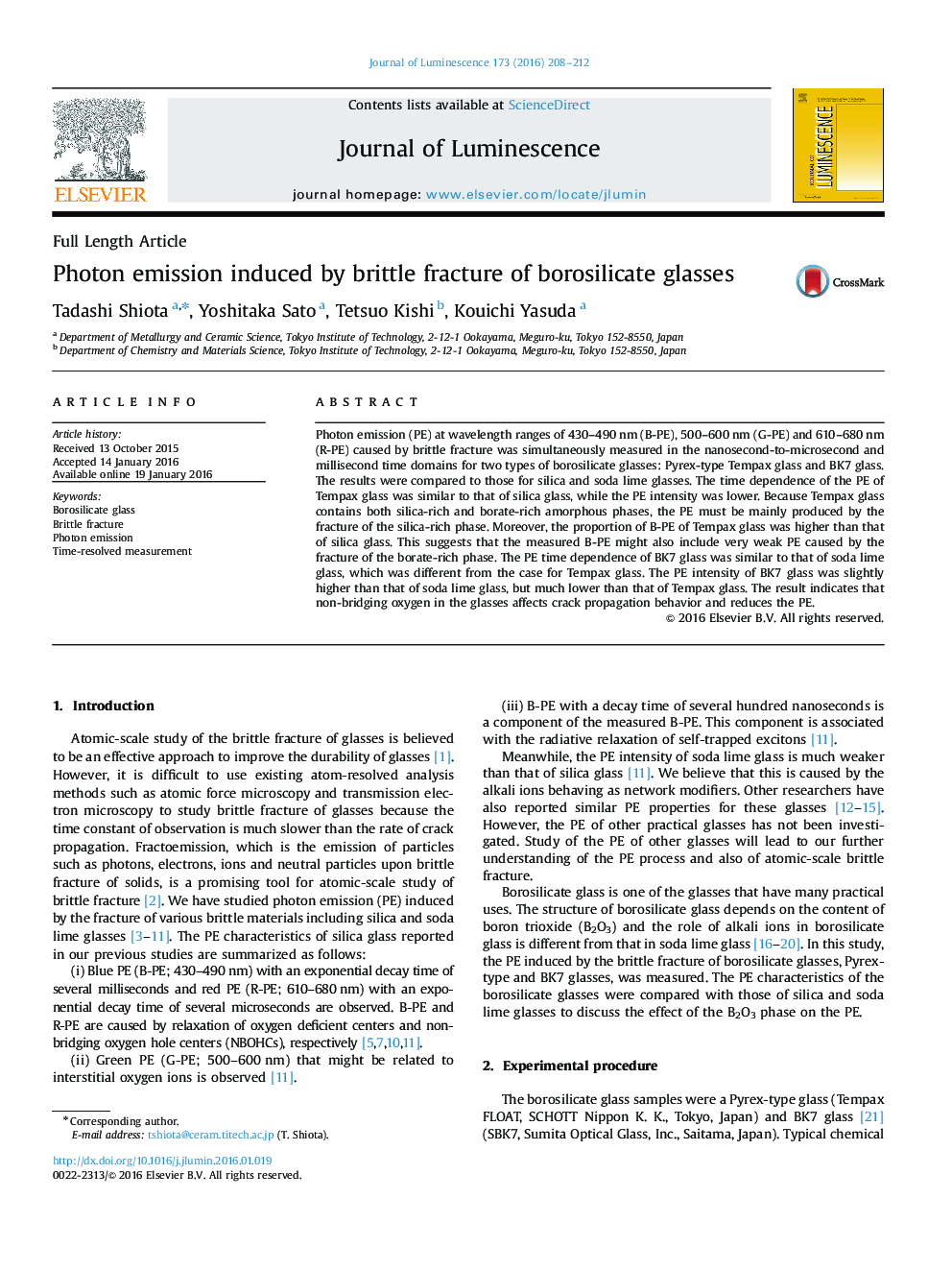| Article ID | Journal | Published Year | Pages | File Type |
|---|---|---|---|---|
| 5398528 | Journal of Luminescence | 2016 | 5 Pages |
Abstract
Photon emission (PE) at wavelength ranges of 430-490Â nm (B-PE), 500-600Â nm (G-PE) and 610-680Â nm (R-PE) caused by brittle fracture was simultaneously measured in the nanosecond-to-microsecond and millisecond time domains for two types of borosilicate glasses: Pyrex-type Tempax glass and BK7 glass. The results were compared to those for silica and soda lime glasses. The time dependence of the PE of Tempax glass was similar to that of silica glass, while the PE intensity was lower. Because Tempax glass contains both silica-rich and borate-rich amorphous phases, the PE must be mainly produced by the fracture of the silica-rich phase. Moreover, the proportion of B-PE of Tempax glass was higher than that of silica glass. This suggests that the measured B-PE might also include very weak PE caused by the fracture of the borate-rich phase. The PE time dependence of BK7 glass was similar to that of soda lime glass, which was different from the case for Tempax glass. The PE intensity of BK7 glass was slightly higher than that of soda lime glass, but much lower than that of Tempax glass. The result indicates that non-bridging oxygen in the glasses affects crack propagation behavior and reduces the PE.
Related Topics
Physical Sciences and Engineering
Chemistry
Physical and Theoretical Chemistry
Authors
Tadashi Shiota, Yoshitaka Sato, Tetsuo Kishi, Kouichi Yasuda,
